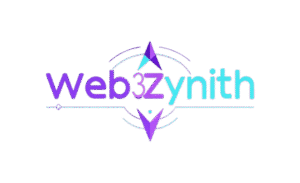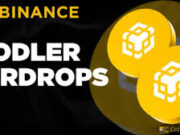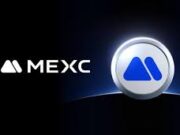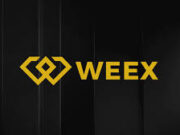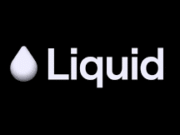The decentralized finance (DeFi) ecosystem is buzzing with renewed energy in 2025, as onchain activity surges and transaction fees reach unprecedented levels. According to recent data, monthly DeFi fees have soared to approximately $577 million, marking a 58% increase from a low of $366 million in April 2025. This remarkable recovery signals a robust resurgence in user engagement and transaction volumes across major DeFi protocols. Platforms like PancakeSwap and Pump.fun are leading the charge, capitalizing on technical innovations and market trends to drive this fee boom. Let’s dive into what’s fueling this surge and what it means for the future of DeFi
The Fee Surge: A Sign of DeFi’s Comeback
After a period of subdued activity earlier in 2025, DeFi is roaring back to life. The $577 million in monthly fees reflects a significant uptick in onchain transactions, driven by a combination of recovering market conditions and growing user adoption. This resurgence comes on the heels of a challenging Q1, where market volatility and security concerns temporarily dampened activity. However, platforms have adapted, with innovations in user experience, security, and cross-chain interoperability paving the way for renewed momentum.
The fee growth is a clear indicator of real user activity, not just speculative hype. Protocols are seeing higher transaction volumes as users engage in trading, yield farming, and other DeFi services. This is particularly evident in the performance of decentralized exchanges (DEXs) and meme coin platforms, which are capturing significant market share. The data underscores a shift toward sustainable monetization models, where protocols generate revenue through transaction fees rather than relying solely on token speculation.
PancakeSwap and Pump.fun: The Fee-Generating Giants
Two platforms stand out as key drivers of this fee surge: PancakeSwap and Pump.fun. PancakeSwap, a leading DEX on the BNB Chain, has solidified its dominance by capturing 66.9% of the trading volume market share in a single week, with a staggering $149 billion in monthly trading volume. This dwarfs competitors like Ethereum-based Uniswap, which recorded $86 billion in the same period. PancakeSwap’s automated market-making services and yield farming opportunities have made it a go-to platform for traders, contributing significantly to the fee spike.
Meanwhile, Pump.fun, a Solana-based platform, has taken the meme coin sector by storm. It has surpassed Ethereum in 2025 fee revenue, generating $296.1 million year-to-date compared to Ethereum’s $249.1 million. Pump.fun’s success is tied to its token creation mechanics, which have facilitated over 10 million token launches in a single month, with daily token creation exceeding 30,000. The platform’s low-cost, high-speed infrastructure on Solana has enabled this unprecedented experimentation in the meme coin space, driving transaction frequency and fee revenue.
Why Are Fees Soaring?
Several factors are contributing to the DeFi fee boom in 2025:
- Increased Onchain Activity: The rise in transaction volumes reflects growing user engagement with DeFi protocols. From decentralized trading to yield farming and staking, users are interacting with platforms at a higher rate, pushing up fee generation. This is particularly evident in high-throughput blockchains like Solana, which support low-cost, high-speed transactions.
- Meme Coin Mania: The meme coin trading boom, led by platforms like Pump.fun, has significantly boosted fee revenue. Despite lower individual transaction values, the sheer frequency of trades in the meme coin sector has created a substantial revenue stream. This trend highlights the growing popularity of speculative but accessible DeFi use cases.
- Technological Advancements: DeFi platforms are optimizing for scalability and user experience. Layer-2 solutions like Arbitrum and Base, as well as high-performance layer-1 blockchains like Solana and Aptos, are reducing transaction costs and enabling more activity. Additionally, cross-chain interoperability solutions, such as those from LayerZero and Axelar, are making it easier for users to move assets across networks, further driving engagement.
- Institutional Adoption: As DeFi matures, institutional players are entering the space, attracted by predictable revenue streams and improving security. The integration of stablecoins like USDC into traditional financial systems, such as Visa’s payment network, is also boosting onchain activity and fee generation.
Challenges Amid the Boom
Despite the optimistic outlook, the DeFi sector faces challenges that could impact its trajectory. Security remains a top concern, with high-profile hacks, such as the ByBit breach involving nearly 401,000 ETH (~$1.5 billion), underscoring the need for robust infrastructure. Platforms are responding by enhancing threat detection, refining smart contract flows, and implementing features like 1inch’s Shield and dYdX’s Permissioned Keys to protect users
Additionally, market volatility and macroeconomic uncertainties could pose risks. While DeFi’s fundamentals are strong, with daily trading volumes holding at ~$20 billion and total value locked (TVL) approaching $115 billion, external factors like regulatory changes or economic downturns could temper growth.
What’s Next for DeFi in 2025?
The fee surge is a testament to DeFi’s resilience and growing appeal, but the sector’s evolution is far from over. Looking ahead, several trends are likely to shape the DeFi landscape in Q2 and beyond:
- Cross-Chain Interoperability: Projects like LayerZero and Axelar are set to mature, enabling seamless interactions across blockchains. This could unlock new opportunities for DeFi users and drive further fee growth.
- Layer-2 Dominance: Layer-2 solutions like Arbitrum, Optimism, and Base are gaining traction, offering lower fees and faster transactions. Their TVL has surged 232% in the past year, signaling a shift toward scalable infrastructure.
- Stablecoin Integration: Stablecoins like USDC and USDT are becoming the backbone of DeFi, supporting cross-chain liquidity and driving fee generation through trading and remittance use cases.
- Security Innovations: As hacks remain a concern, platforms are prioritizing advanced security features, such as AI-driven scam detection and MEV protection, to build trust and sustain growth
Conclusion: A Bright Future for DeFi
The DeFi fee surge in 2025 reflects a maturing ecosystem that’s finding its footing after a volatile start to the year. Platforms like PancakeSwap and Pump.fun are capitalizing on market trends and technological advancements to drive unprecedented onchain activity. While challenges like security and volatility persist, the sector’s fundamentals—high trading volumes, growing TVL, and institutional interest—point to a promising future.
As DeFi continues to evolve, 2025 could mark a turning point, with cross-chain solutions, layer-2 scalability, and enhanced security paving the way for broader adoption. For investors, developers, and users, now is the time to pay attention to DeFi’s quiet but powerful comeback. Are you ready to dive into the onchain revolution?
